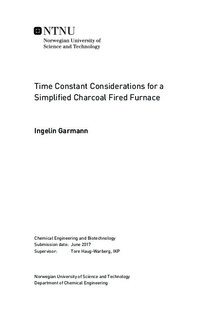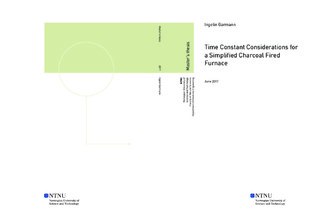| dc.description.abstract | A mathematical model for a spherical control volume containing a combustion chamber buried in moist sand was derived based on the thermodynamic laws for heat transfer. The combustion chamber holds an iron core and a carbon-containing furnace enclosed by a steel wall. Temperature models were obtained both for coal combustion in the furnace, and for pure conduction of heat in a multilayered material. The heat generated by the furnace would cause the moisture in the surrounding sand to evaporate. A moving boundary condition was implemented account for the increasing layer of dry sand surrounding the furnace. The requirement for the increasement of the boundary was complete evaporation of the moisture content in the surrounding spherical shell. The differential equations describing heat conduction were discretized by central finite differences and rearranged to yield a first order linear differential equation system with respect to time. The non-perfect heat transfer over interfaces were accounted for by the thermal contact conductance coefficient. The complete equation system for a fixed number of temperature nodes, were formulated on the general linear time invariant form, and solved by the application of eigenvalues and eigenvector. The temperature evolution in the burning furnace was derived from the energy balance, and also formulated into a matrix differential system. The numerical models were implemented in MATLAB. The temperature profiles for combustion of coal in a furnace was obtained for different amounts of reactants, for the control volume holding an initial temperature of 373.15 K. The obtained temperature evolution at the different nodes coincide with what is expected of a heat generating process. The solution process was repeated for conductive heat transfer through the materials, with the temperatures of the final heating stage as initial condition. This is only presented for one amount of limiting reactant, due to the small effect on the conductive process. The evaporation times and transient temperature evolutions were considered and discussed in an attempt to determine a characteristic time constant for the process of heating and cooling of the system. | |

